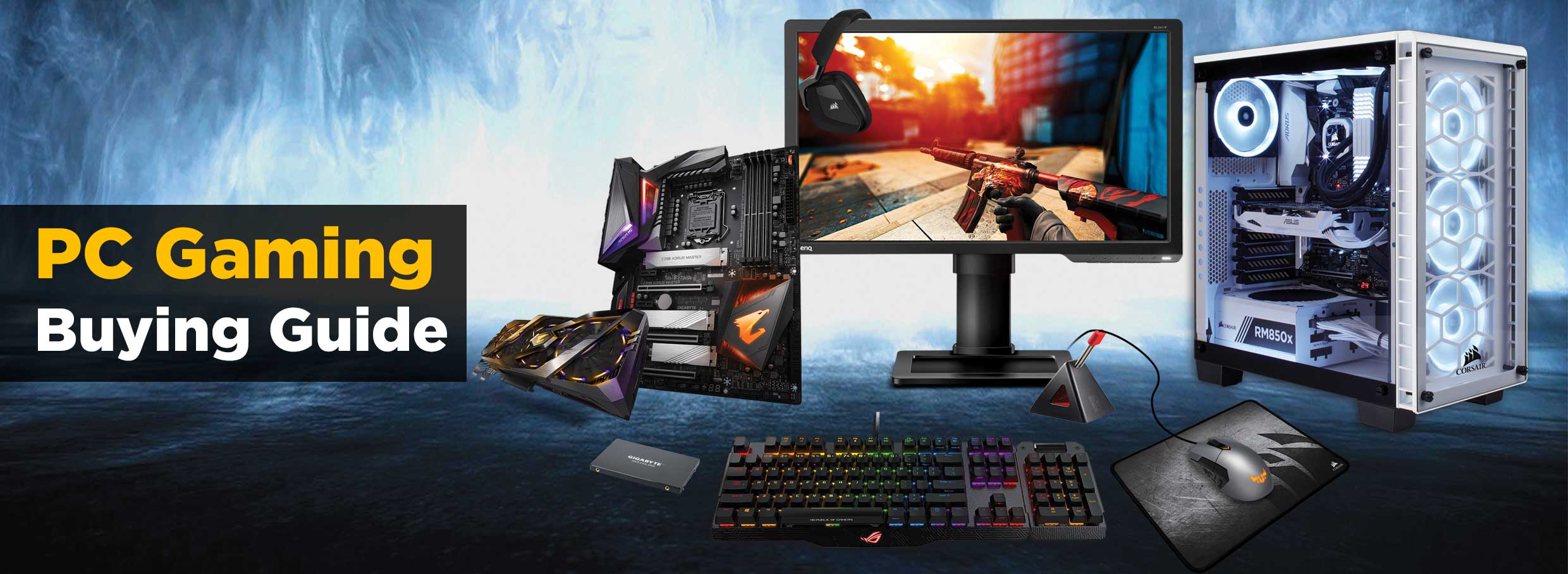Buying Guide
admin2025-04-19T06:29:06+05:00PC Gaming Buying Guide
A top-of-the-line PC will outpace the newest gaming consoles when it comes to sheer computing power, but many low-to-mid-tier computers also provide great gaming experiences. PC gaming is largely about customizability, giving you a vast array of hardware and accessories to choose from. No matter how you want to game, EASETEC has a PC for you, and this guide will help you find it.
Topics in this PC Gaming Buying Guide:
Keyboards
Mice and Mouse Pads
Upgrading Your Current PC
Monitors
Headsets
Desktop PCs are the preferred computers of gamers, since they are easily upgradable and have room to pack some serious power. While gaming desktops can do all of the things standard home computers can do — letting you surf the Internet, browse photos, access social networks and more — they are far more powerful in order to handle blockbuster games, which are resource intensive by nature.
Processor/CPU
Since blockbuster gaming can require large amounts of processing power, gaming PCs are built to process data extremely fast, which means you should expect to find a high-end processor in any gaming desktop.
Video graphics card/GPU
Most gaming PCs will have a dedicated graphics card. This comes with additional resources and processing power that your system will dedicate exclusively to visual quality. This has an obvious impact on the quality of video games, delivering smoother frame rates with far less graphical lag. A powerful graphics card will also provide a boost for anything involving visuals, including graphic design and video editing.
Cooling
Gaming PCs, with their powerful processors and graphics cards, can get very hot, so they will usually require some sort of cooling system. Processors are typically coupled with heatsinks and cooling fans, but manufacturers will sometimes go as far as to add a liquid coolant system to provide exceptional cooling with virtually no noise.
Upgrading Your Current PC
It’s possible that with a few upgrades, you could turn the PC you already own into a gaming PC. Here are the most important components to consider.
Video graphics card/GPU
Serious gaming requires a lot of graphical power. Most standard PCs come with built-in graphics processing, but many games require a dedicated graphics card. In many cases, adding a graphics card to your PC will give you a noticeable boost in performance. If you’re looking for the most bang for your buck, this is a great place to start.
The graphics card you choose will largely depend on what types of games you’re interested in playing and how much you want to spend. Sometimes, even a very basic graphics card will give you the performance boost you need. If you are really looking to push your system and play the newest games on the highest graphical settings, however, you might want to invest in a faster model with more built-in RAM.
Processor/CPU
Your processor determines how fast your computer can perform tasks. Playing the most current video games will put your system through its paces, and a faster processor will help your system keep up with the intense demands of gaming.
When looking at a processor, one of the key features is how many cores it has. Having multiple cores makes your processor more efficient by splitting the data processing between them. Not all games will take advantage of the maximum number of cores though, so it is useful to know how many cores your favorite games make use of before deciding upon a specific number of cores.
Another factor to consider is frequency, or speed, which is measured in Hz (hertz) or, currently, GHz (gigahertz). For example, a 3GHz processor is faster than a 2GHz processor. For smooth performance in the most advanced and current games, you might want to consider 3GHz or more, but several games will run on processors slower than that.
If you upgrade your processor, it is essential that you purchase a model that is compatible with your current machine. The motherboard on your PC is built to be compatible with a specific socket type, so it’s important to match the socket type of your processor with that of your motherboard.
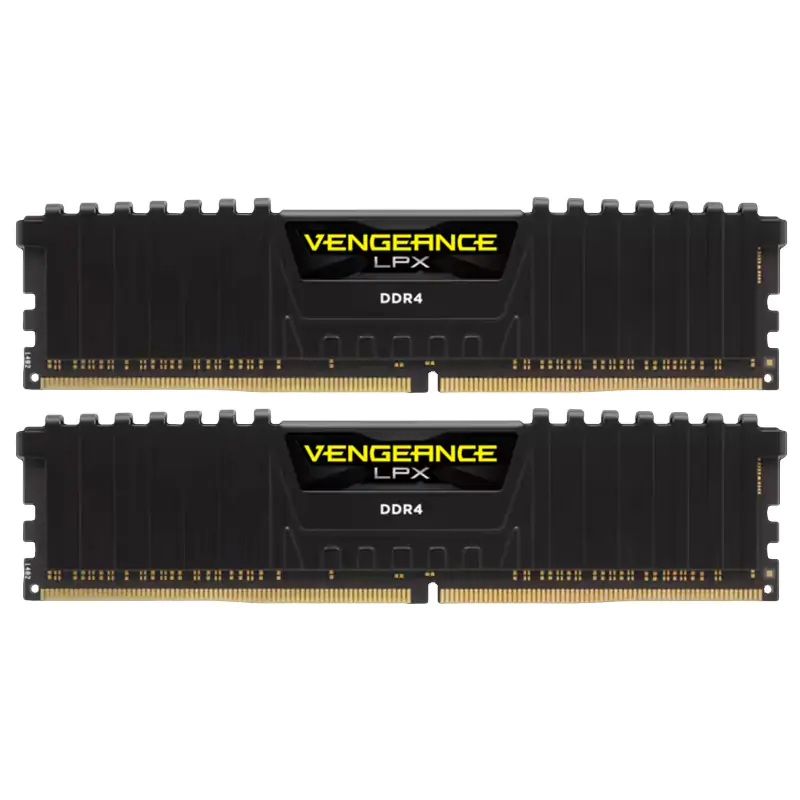
Memory/RAM
RAM stands for Random Access Memory. It stores temporary data on the fly while your computer is performing tasks. The more RAM you have, the more things your computer will be able to do simultaneously. It’s recommended that you have a minimum of 4GB of RAM for gaming, but increasing this to 8GB or more will often lead to much better performance.
Not having enough RAM can create a bottleneck in gaming performance, as games require several different types of data to be manipulated all at once. Thankfully, it’s not a very expensive component to upgrade.
Keep in mind that there are several types of RAM, and you’ll need to make sure that any RAM you buy is compatible with your motherboard before making the upgrade.
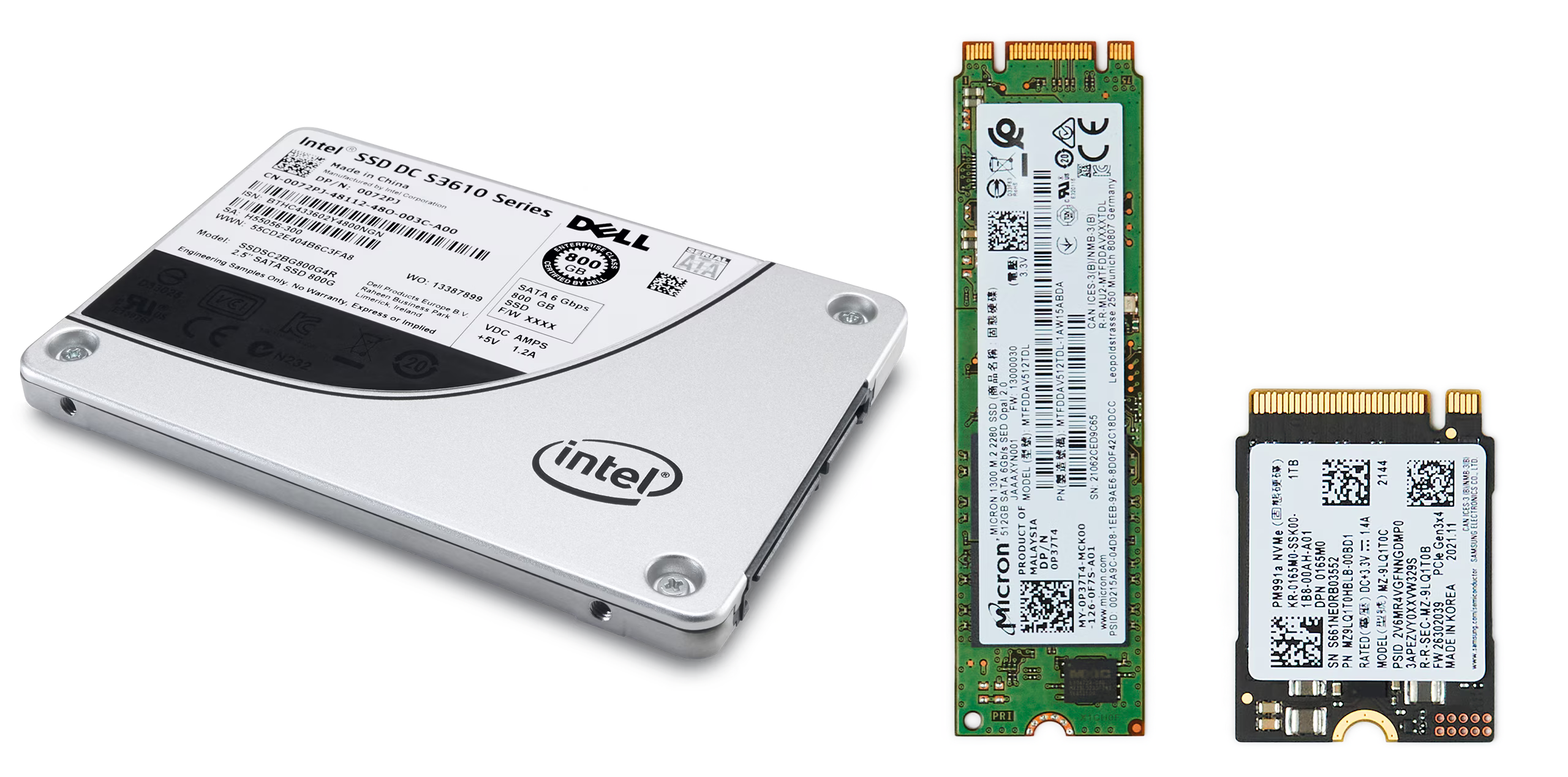
Hard drive
All of the files that bring those gigantic, detailed game worlds to life are stored locally on your hard drive, so you’ll need lots of room to store that information.
The ideal gaming hard drive will be fast, with plenty of storage space. Standard hard drives store their data on rotating discs, so the faster a disc rotates, the faster your computer will be able to access that data. Many standard hard drives spin at 5400 RPM, but there are some that spin at 7200 RPM. When it comes to gaming, faster is always better.
Solid-state hard drives are built for speed since they don’t use the standard rotating disc model, but they tend to hold less data and may cost more than standard hard drives. An option to consider is installing your essential system files on a small solid-state hard drive and having a much larger secondary hard drive for storage.
There are also external hard drives that simply plug into your PC’s USB port.
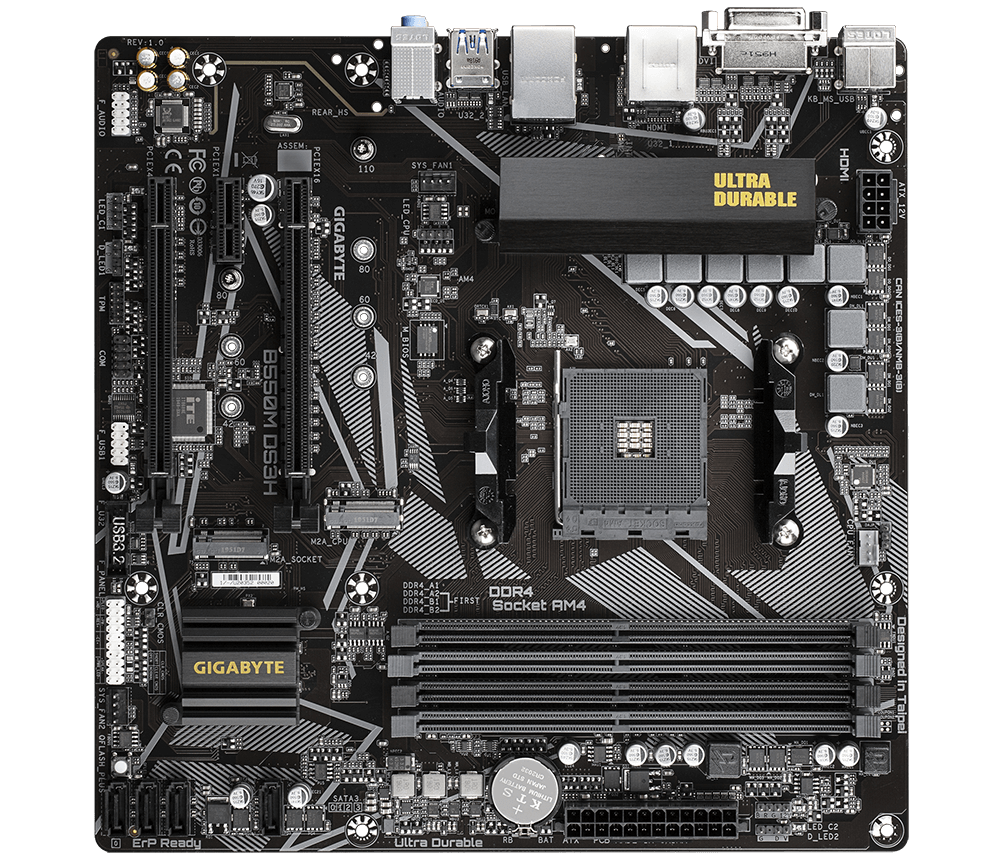
Other factors to consider
In order to upgrade your system, you’ll have to make sure new parts are compatible with your existing hardware before you make the purchase.
You might also consider installing a sound card or utilizing an external card to pump out better audio than the onboard sound you’d find built into a standard PC.
It’s also important to look for performance bottlenecks on your system. You might buy the best graphics card on the market, but if you have a small amount of RAM or a slower processor, your system won’t be able to maximize the potential of that card and you might still experience slow or stuttering performance. To maximize your upgrade, you’ll want to isolate the pieces that are causing the biggest performance bottlenecks and make sure you prioritize replacing those components.
Keep in mind that more powerful components may require an enhanced power supply, better cooling and a larger case.
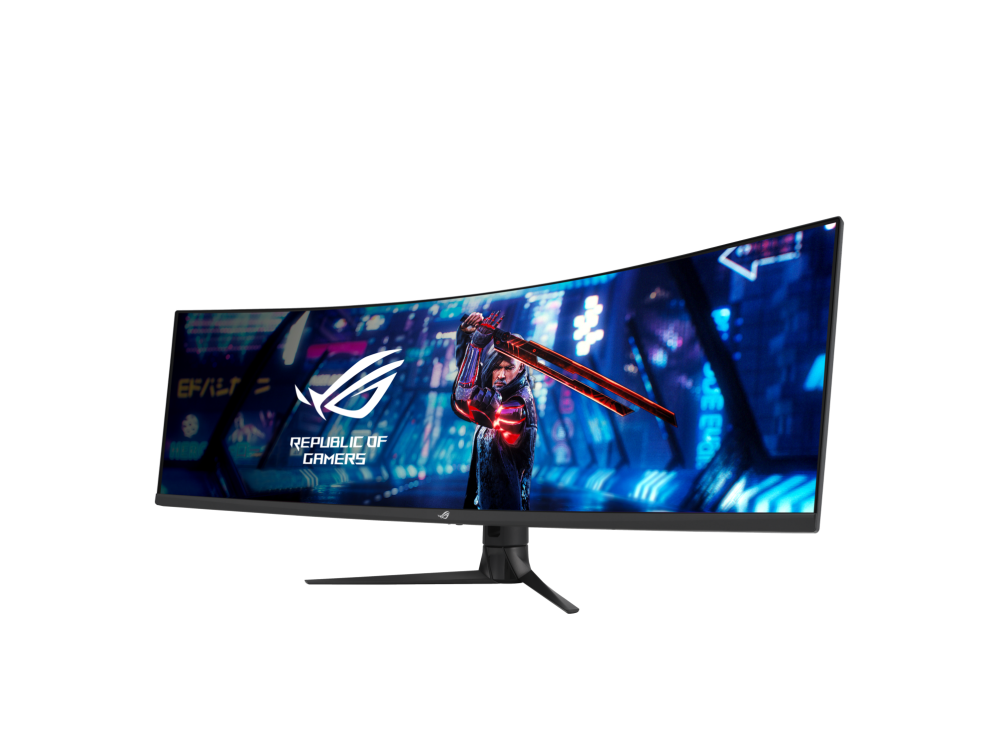
Monitors
A monitor is your personal window into the game worlds you enjoy, so it plays a central role in your gaming experience. Here are some things to consider when choosing a gaming monitor:
Size
One of the most important factors in buying a monitor is size. You want to choose a size that works for you, based on how much room you have on your desk and how close to your monitor you plan to sit. Bigger isn’t always better; when you sit close to a large monitor, the edges of the screen could be outside your peripheral vision. Between 20″ and 25″ seems to be an ideal range for people who play games at a desk, but this will increase if you sit further from your monitor.
Resolution
Using a screen with a high resolution will give you a larger field of vision. Essentially, the higher your resolution, the more of a game world you’ll be able to see—vertically and horizontally—at any given time. Additionally, in games that support higher resolution textures, you will get smoother visuals with higher screen resolutions. However, running games at higher resolutions will take up more system resources.
You can typically adjust the display resolution in the options menu of most games, but every monitor has a maximum resolution that can be displayed. If you want to game at a very high resolution, make sure you purchase a monitor that can support it.
4K UHD
Currently, the highest monitor resolution available is 4K, which displays at 4x the resolution of Full HD. To put it another way, a 4K monitor will contain 4x as many pixels as a similarly-sized Full HD monitor. Those extra pixels allow you to widen your field of vision tremendously and get a far smoother look in the games you play.
Curved monitors
To get an extremely wide field of vision, several gamers will place two monitors side by side, which is a feature that is supported by most high-end graphics cards. One advantage a dual-monitor setup has over a single one is that you can bend your field of vision around you, putting more screen real estate into your peripheral. One disadvantage to this is you’ll have a split right in the center of your display where the two monitors come together.
The best of both worlds can still be had with a curved monitor. The gentle bend allows for a wider field of vision, enveloping you and immersing you deeper into your game worlds..
Refresh rate
Refresh rate is the number of times your screen refreshes per second, so a 60Hz monitor will refresh 60 times every second. This is important because faster refresh rates will display motion with more clarity and smoothness.
For gaming, it’s recommended that your refresh rate is a minimum of 60Hz. Double that to 120Hz if you plan on taking advantage of cinema-like 3D.
Response time
Response time is how your screen’s pixels can transition from one color to another. In games, where actions tend to be lightning quick, slower response times can lead to motion blur or “ghosted” images. Response time is measured in milliseconds, so the smaller the number, the faster the response time.
For gaming, it’s recommended that your response time is 5 ms or less.
G-SYNC Monitors
Monitors equipped with NVIDIA G-SYNC technology provide a smooth gaming experience, virtually free of stuttering, screen tearing and lag. These displays feature refresh rates up to 240Hz, and synchronize with the compatible GPU in your PC. Each G-SYNC monitor is also NVIDIA Certified, going through rigorous testing for consistent quality and performance with the GeForce GTX gaming platform.
G-SYNC monitors will work with any PC but will only deliver these benefits when paired with a compatible NVIDIA graphics card.
FreeSync Monitors
Monitors featuring AMD FreeSync technology deliver fluid gameplay — essentially putting an end to choppy gameplay and broken frames for virtually any frame rate — by synchronizing with your compatible graphics card.
FreeSync monitors will work with any PC but will only deliver these benefits when paired with a compatible AMD graphics card.
Headsets
Comfort
A gaming headset should be lightweight enough to be comfortable for long periods of time. Full-ear models are the most common, since they fully surround your ears to deliver quality audio and cancel out background noise.
Surround sound
While many headsets deliver stereo sound with a single speaker for each ear, some higher quality models add additional speakers in each earcup to deliver a true surround sound experience. Surround sound headsets will require a compatible sound card on your PC in order for you to take full advantage of this feature.
Microphone
Communication is a key element of good teamwork, so gaming headsets usually feature a boom mic that lets you talk to your friends and allies. Some booms are adjustable, which gives you more control over mic positioning.
Volume control
Many headsets include a separate control switch that adjusts in-game chat independently of the game’s audio so you can adjust volume on the fly. This feature can be helpful in situations where your teammates talk too loudly or quietly.
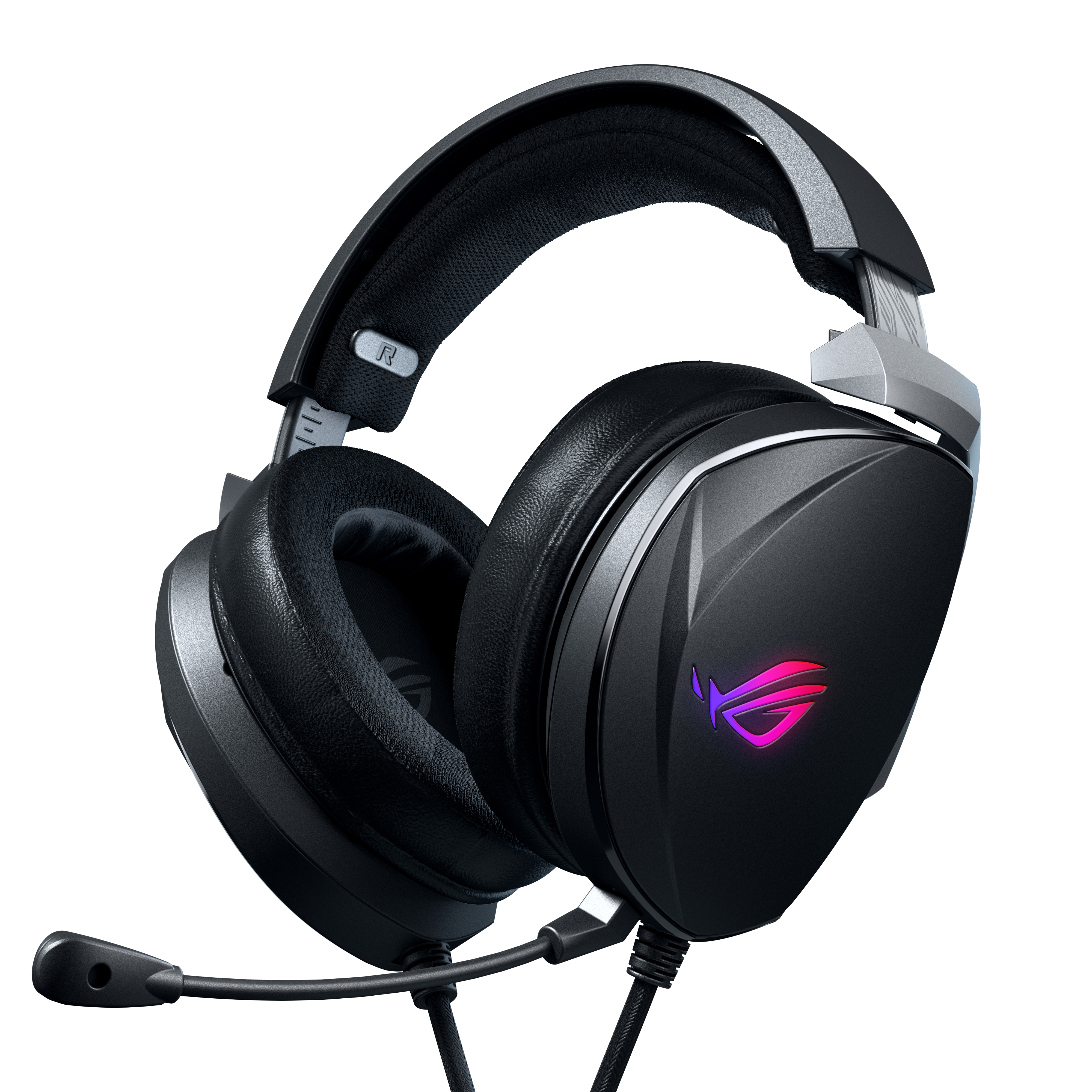
Wired vs. wireless
Headsets come in wired and wireless versions, and there are benefits to both. One on hand, wired headsets are much cheaper, and many users claim they deliver better sound quality. On the other, wireless headsets don’t have cords to tether you to your PC.
Wireless headsets usually connect to your PC via Bluetooth, so going this route will require you to have a PC with Bluetooth compatibility. Wired headsets sometimes plug into the audio jacks on your PC, but many of them will plug into a USB port.
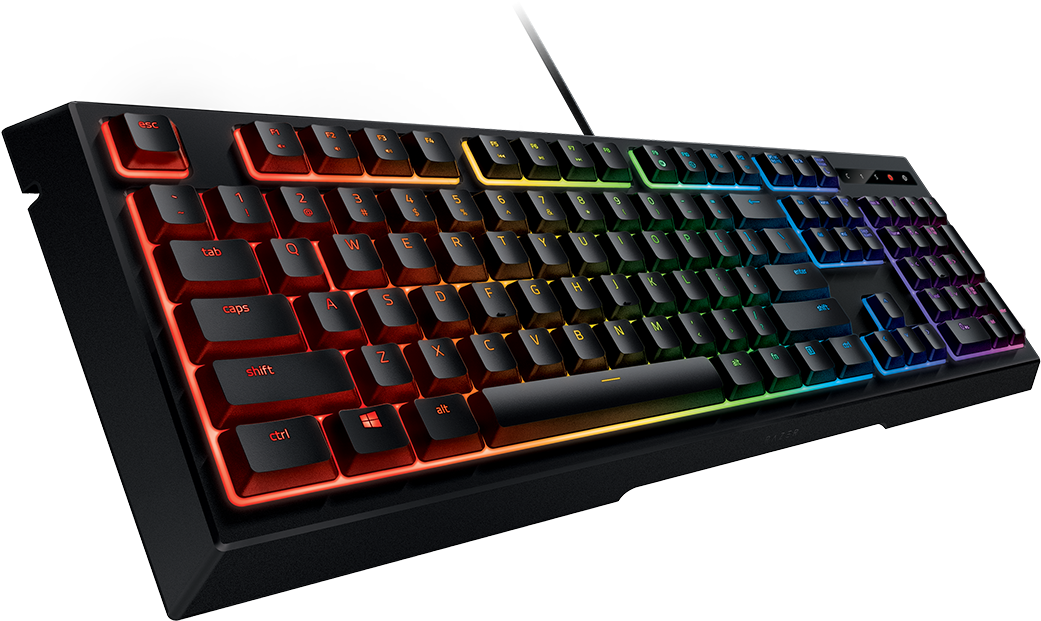
Keyboards
If you plan on doing a lot of serious gaming, you should demand a bit more from your keyboard than a standard user would. Here are some features to consider when purchasing a gaming keyboard:
Mechanical Keyboards
In mechanical keyboards, every key has its own individual mechanical switch. While these are heavier and more expensive than other types of keyboards, they’re also more durable, and keyboard enthusiasts claim they are much more satisfying to use. Since every keystroke produces a click sound as the switch connects, mechanical keyboards have been shown to reduce the number of errors when typing. When a missed keystroke could mean the difference between winning and losing, accuracy is paramount, so a mechanical keyboard is a good choice for gamers.
Anti-ghosting
Ghosting happens when you press several keys simultaneously and your keyboard doesn’t recognize all the keystrokes. Anti-ghosting technology is designed to reduce the number of possible key combinations that can lead to ghosting.
Macros
Macros are complex strings of commands that can be recorded and programmed to be triggered with a single keystroke. Several gaming keyboards feature extra keys that can be used for macros.
Backlit keys
Some keyboards include backlit keys. Not only does this add a stylish flair to your keyboard, it also allows you to see the keys when you’re gaming in a dark or dimly lit room.
With RGB lighting, you can customize your keyboard to enhance your gaming experience. You’ll find options that allow you to highlight the keys you frequently use, adjust pulsating lights, choose effects driven by game action, show teammate’s health status and more.
Switches
The switch below each key on a mechanical keyboard responds to the force of your movements and delivers an audible response to each keystroke. There are a variety of switch brands, each created to take a particular amount of force to activate, with a specific level of sound associated when you touch each key.
Wired vs. wireless
Like mice, keyboards come in both wired and wireless versions, but gamers tend to prefer wired models for several of the same reasons they choose wired mice. Namely, wired keyboards have better response times and utilize a slightly smaller amount of system resources.
Mice and Mouse Pads
Your mouse is one of the key ways you interact with your video games, so gaming mice come with a wide range of features that aren’t usually found on standard mice. Here are some features to look for:
Grip
There are different ways to grip your mouse. Your grip style can affect your personal comfort level with various mouse designs.
Palm Grip: The most common way people hold a mouse is with your palm and fingers mostly flat on the mouse. This is referred to as the “palm grip.”
Claw Grip: The “claw grip” is a lighter grip that requires you to arch your fingers. Many gamers prefer this grip style, claiming the lighter touch leads to higher accuracy.
Fingertip Grip: Similar to the claw grip, the “fingertip grip” keeps your palm off the mouse completely.
Once you determine the grip style you find most appealing, you’ll want to make sure your mouse will be comfortable for you. For extended gameplay sessions, you’ll want a mouse that’s ergonomic to avoid cramping. It should be noted that while most mice are designed for multiple grip styles, several high-end mice are optimized for a particular grip style.
DPI
Mouse sensitivity is measured in DPI (dots per inch). The higher the DPI rating of a mouse, the more sensitive and accurate it is. However, extreme sensitivity isn’t always necessary. Keep in mind that the higher the DPI rating, the further your curser will move on your screen when you move your mouse an inch. Additionally, higher DPI ratings will consume more system resources and could lead to slower performance on low-end PCs.
Some mice include buttons that let you adjust DPI on the fly so you can switch between settings with ease. If you prefer different sensitivities for different weapons in a first-person shooter, for example, being able to swap DPI settings with the click of a button can save valuable time on the virtual battlefield.
Polling
The polling rate of a mouse is how often the mouse sends data to your computer. The more often your mouse sends data to your PC, the faster the response time. However, like DPI, this can increase the amount of system resources being used by your mouse, so a higher rating isn’t always ideal. Your best course of action is to balance DPI and polling rate with the amount of system resources you can spare.
Additional buttons
Gaming mice often include several additional buttons that give you more control over how you want to play. If you play massively multiplayer online role-playing games (MMORPGs), having a large number of programmable buttons on your mouse lets you set up a control style that feels right for you. It also requires a minimal amount of finger movement per button click.
Wired vs. wireless
Mice come in both wired and wireless varieties. For serious gaming, it’s preferable to choose wired models, since they typically have a faster response time than their wireless counterparts. Wired models also use a slightly smaller percentage of system resources, since they don’t require extra drivers to regulate the wireless connection.
Additionally, wireless mice are powered by batteries, which will eventually run out of power. This can be mitigated by keeping extra batteries or a charger on hand, but in the heat of battle, running out of battery power can cause you to lose the match. With a wired mouse, you simply won’t have to worry about batteries dying at inconvenient times.
Mouse pads
A larger mouse pad will give you more range of motion with your mouse. Most mouse pads have a cloth surface with a rubber backing to prevent the pad from sliding around on a desk, though some heavy-duty gaming mouse pads are made of aluminum. Aluminum mouse pads last much longer than cloth mouse pads, they don’t fray on the edges over time, and they’re easier to keep clean. They also won’t wrinkle, fold or buckle during intense use. You’ll also find options with an integrated USB port to give you more room for peripherals on your system as well as customizable RGB lighting to enhance your gaming experience.
Shop:


